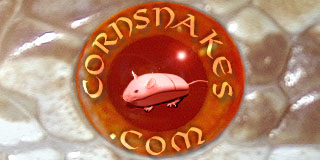All I got was a server error?
~B~
I don't know why it keeps doing that.....
OK here it is copied and pasted....
Save Article to My Profile Download Citation
Abstract |
References | Full Text:
PDF (Size: 180K) |
Related Articles |
Citation Tracking
[SIZE=+1] Research Article[/SIZE]
Prey envenomation does not improve digestive performance in western diamondback rattlesnakes (
Crotalus atrox)
Marshall D. McCue[SIZE=-1] *[/SIZE]Department of Biological Sciences, University of Arkansas, Fayetteville, Arkansas 72701
email: Marshall D. McCue (
[email protected])[SIZE=-1]*[/SIZE]Correspondence to Marshall D. McCue, Department of Biological Sciences, 601 Science Engineering, University of Arkansas, Fayetteville, AR 72701
Funded by:
NSF-GRF and Walton Distinguished Doctoral Fellowship
AbstractAlthough the toxic properties of snake venoms have been recognized throughout history, very little is known about the adaptive significance of these powerful mixtures. This study examined the popular hypothesis that prey envenomation enhances digestion by influencing the energetic costs of digestion and assimilation, gut passage time, and apparent assimilation efficiency (ASSIM) in western diamondback rattlesnakes (
Crotalus atrox), a species whose venom is recognized for its comparatively high proteolytic activities. A complete randomized block design allowed repeated measures of specific dynamic action and gut passage time to be measured in eight snakes ingesting four feeding treatments (i.e., artificially envenomated live mice, artificially envenomated prekilled mice, saline injected live mice, and saline injected prekilled mice). A second experiment measured ASSIM in eight snakes ingesting a series of six artificially envenomated or six saline injected mice meals over an 8-week period. Contrary to expectations, the results of both these experiments revealed that envenomation had no significant influence on any of the measured digestive performance variables. Gut passage time averaged 6 days and ASSIM averaged 79.1%. Twenty-one hours following ingestion, postprandial metabolic rates exhibited factorial increases that averaged 3.9-fold greater than resting metabolic rate. Specific dynamic action lasted on average 88 hr and accounted for 26% of the total ingested energy. The results of this study reinforce the need to systematically examine the potential adaptive advantages that venoms confer on the snakes that produce them.
J. Exp. Zool. 307A:568-577, 2007. © 2007 Wiley-Liss, Inc.Received: 10 April 2007; Revised: 16 May 2007; Accepted: 2 July 2007Digital Object Identifier (DOI)


